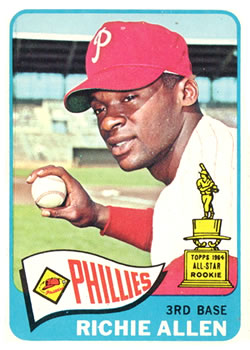September 3, 1964: Houston’s Don Larsen tosses four-hit shutout, Philly boo birds target Dick Allen
 On September 3, 1964, Don Larsen of the lowly Houston Colt .45s tossed a four-hit shutout against the first-place Philadelphia Phillies at Connie Mack Stadium in Philadelphia.1 Larsen allowed only six baserunners en route to his first whitewash in more than five years.2 Phillies third baseman Dick Allen, who was favored to win the National League Rookie of the Year Award and was in contention for the MVP Award,3 tripled and walked in four plate appearances against Larsen.
On September 3, 1964, Don Larsen of the lowly Houston Colt .45s tossed a four-hit shutout against the first-place Philadelphia Phillies at Connie Mack Stadium in Philadelphia.1 Larsen allowed only six baserunners en route to his first whitewash in more than five years.2 Phillies third baseman Dick Allen, who was favored to win the National League Rookie of the Year Award and was in contention for the MVP Award,3 tripled and walked in four plate appearances against Larsen.
The 22-year-old Allen, in his first season as a professional at third base, wasn’t charged with an error in the contest. Yet many Philadelphia fans spent the second half of the game booing and jeering him for his fielding, which they considered to be poor. It was not the first time Allen had been booed in the City of Brotherly Love, and it would certainly not be the last.4
Allen had led the International League in home runs and RBIs in 1963, overcoming vehement opposition from Little Rock fans to his integration of the Arkansas Travelers. Phillies manager Gene Mauch was so eager to get Allen’s bat into the lineup in 1964 that he converted him from outfield to third base in spring training. Allen turned out to be a huge upgrade at third over good-field, no-hit veteran Don Hoak.5
The promotion of Allen, along with the acquisition of hurler Jim Bunning in a trade with the Detroit Tigers, transformed the Phillies from a fourth-place team into a strong pennant contender.6 Philadelphia came into its September 3 game with an 80-51 record, 5½ games ahead of the second-place Cincinnati Reds and a whopping 24½ games in front of ninth-place Houston (57-77). Allen was second in the NL with 98 runs scored and eighth in the batting race with a .311 average.7 His naysayers might have pointed out that he also led the majors with 35 errors and was second in the NL with 114 strikeouts.
The game was played against the backdrop of racial tension and social unrest in Philadelphia and across the United States. The tumultuous summer of 1964 saw the Civil Rights Act signed into law by President Lyndon B. Johnson on July 2. Later that month, police brutality and longstanding racial inequality led to rioting in Harlem and Rochester, New York.8 In August similar factors led to social unrest in Jersey City, New Jersey, and Dixmoor, a suburb of Chicago.9
On August 28 in North Philadelphia – just over a mile from Connie Mack Stadium – excessive force used by a policeman to arrest a Black woman, Odessa Bradford, triggered the Columbia Avenue Uprising. When the rioting finally subsided, two people were dead, 350 were injured, and more than 1,000 arrests had been made.10
As the Phillies and Colt .45s took to the field on September 3, more than four square miles of North Philadelphia was under “virtual police occupation” and a curfew was still in effect.11
The 35-year-old Larsen, eight years removed from tossing a perfect game in the World Series, had been picked up on waivers in late May to improve Houston’s bullpen. But pitching injuries forced manager Harry Craft to move Larsen into the starting rotation in mid-August.12 Since joining the Colt .45s, a rejuvenated Larsen had gone 2-5 with a 2.07 ERA in 4 starts and 20 relief appearances.
Larsen was opposed by 24-year-old southpaw Dennis Bennett, who came into the game with a 9-11 record and a 3.84 ERA.
In the bottom of the first, Allen drew a walk and Wes Covington singled to put runners on the corners with two out. Larsen got out of the jam by retiring catcher Clay Dalrymple on a fly ball. It was the only time in the game that the Phillies had more than one runner on base.
The contest was still scoreless in the fourth when, with a runner on first and one out, Houston third baseman Bob Aspromonte hit a ball to Allen for an infield single.13 The hit turned out to be harmless, as Bennett retired the next two batters to escape the inning unscathed.
After Bennett got the first two batters out in the fifth, shortstop Eddie Kasko hit a groundball that bounced off Allen’s chest for an infield single.14 The next batter, light-hitting Bob Lillis, dropped a bunt down the third-base line and Allen was unable to get the out.15 The official scorer ruled it an infield hit, and disgruntled Phillies fans booed their star third baseman.
Bennett struck out rookie left fielder Mike White to end the inning. Even though no Houston runs resulted from the three infield hits, fans spent the rest of the game booing Allen and cheering derisively when he made an easy play in the field.16
Bennett surrendered seven hits in the first five innings, yet the game remained scoreless. His luck ran out in the sixth. Houston tallied the game’s first run on a leadoff single off the right-field wall by Walt Bond and an RBI double by Aspromonte. One out later, center fielder Carroll Hardy smashed a two-run homer off the left-field roof and out of the ballpark.17 It was a remarkable blast for a hitter who came into the game with just 15 homers in 410 career games.
Righty John Boozer replaced Bennett on the mound and retired only one of the four batters he faced. Boozer gave up three one-baggers, including an RBI single by Lillis. Ed Roebuck, another right-hander, came in and surrendered an RBI double to White before he was able to stem the bleeding. The Colt .45s had a commanding 5-0 lead.
Houston tacked on a sixth run in the ninth against Philadelphia’s fifth pitcher, Jack Baldschun.18 After loading the bases on two singles and a walk, Baldschun forced in a run by hitting right fielder Joe Gaines with a pitch.
Larsen, relying mainly on a mix of fastballs and sliders, seemed to get stronger as the game progressed.19 In the final five innings, he limited the Phillies to a walk by Dalrymple in the seventh and Allen’s eighth-inning triple. Larsen closed it out with a one-two-three ninth.
It was Larsen’s 11th and final career shutout. He won only two more games in the big leagues, finishing his career in 1967 with an 81-91 record and a 3.78 ERA.
Aside from Larsen’s shutout and White’s 4-for-5 performance, much of the postgame chatter was about the Philadelphia fans’ treatment of Allen. Some of the Colt .45s were puzzled by the hostility. “This is my town, but the fans are bush league,” said Houston outfielder Al Spangler, a Philadelphia native. “How can they boo a guy who may be the most valuable player in the league?”20 Hal Woodeshick, one of the NL’s top relievers, was equally unimpressed. “How can the fans boo that way?” he said. “The kid is in his first year in the majors and you don’t know how it will affect him.”21
The local media was critical of Allen’s fielding, noting on more than one occasion that he was nearing the NL’s single-season record of 41 errors by a third baseman.22 But the NL record was 87 errors by Ed Williamson of the 1883 Chicago White Stockings. Allen was nearing the mark for the most errors by an NL third baseman since 1910.23 Tom Sargent of the Trenton (New Jersey) Evening Times implied that the official scorer would have ruled both balls hit to Allen in the fifth inning an error if he wasn’t approaching the NL “record.”24
A closer look at Allen’s fielding statistics in 1964 shows that he was a much better third baseman than most people thought. Allen finished the season with a major-league-leading 41 errors, but he also played in all 162 games. He was second among NL third sackers with 154 putouts – just two behind Gold Glover Ron Santo – and third with 325 assists. Allen participated in 30 double plays, only one fewer than Santo. (Santo played in 161 games.)
Allen, a shortstop in high school and his first pro season, had above-average range at the hot corner.25 As measured by Total Zone Runs Above Average per year (Rtot/yr), only four of the nine other primary third baseman in the NL were better than Allen defensively.26 His defensive Wins Above Replacement was positive 0.3 wins.
Allen wasn’t the sole target of Philadelphia boo birds for long. On September 21, the Phillies began a seven-game homestand with 12 games remaining and a 6½-game lead in the standings. They lost all seven games, and the booing got so bad that the Phillies were glad to go on the road for the last five games of the season.27 It made no difference. The losing skid hit 10 games and the Phillies finished a game behind the pennant-winning St. Louis Cardinals.
Allen ended the season with a .318 batting average, 29 homers and 91 RBIs.28 He easily won the NL Rookie of the Year Award and finished seventh in MVP voting. As of the end of the 2024 season, his 8.8 Baseball-Reference Wins Above Replacement (bWAR) was still the most for a rookie hitter in NL history.29
Acknowledgments
This article was fact-checked by Harrison Golden and copy-edited by Len Levin.
Sources
In addition to the sources cited in the Notes, the author consulted Baseball-Reference.com, Stathead.com, Retrosheet.org, and the SABR biographies of Dick Allen and Dennis Bennett. Unless otherwise noted, all detailed play-by-play information for this game was taken from the article “Colts Win, 6-0, as Larsen Holds Phillies to 4 Hits” in the September 4, 1964, edition of the Philadelphia Inquirer.
https://www.baseball-reference.com/boxes/PHI/PHI196409030.shtml
https://www.retrosheet.org/boxesetc/1964/B09030PHI1964.htm
Photo credit
Photo of Dick Allen courtesy of the Trading Card Database.
Notes
1 The expansion Colt .45s were in their third year of existence. They had gone 64-96 in 1962 and 66-96 in 1963. Houston finished in ninth place in 1964 with a 66-96 record.
2 Larsen had gone 35 consecutive starts without a shutout. His previous whitewash was for the New York Yankees in the second game of a doubleheader on May 30, 1959, against the Washington Senators.
3 Claude E. Harrison Jr., “R. Allen Has No Competition for NL Rookie Award,” Philadelphia Tribune, September 1, 1964: 11.
4 One of the earliest newspaper reports of the Philadelphia fans booing Allen came in an August 3, 1964, article. According to the report, “some of the boo birds have been getting on Richie Allen lately.” The Phillies had just played their 10th game in a 16-game homestand. Allen was batting .312. During the first 10 games of the homestand, Allen had hit .324 with 1 homer, 3 RBIs, 6 putouts, 18 assists, and 2 errors. According to manager Gene Mauch, Allen had been playing with a painful groin injury that he suffered on July 29. On August 5 Allen tied the Phillies record for most home runs by a rookie (19), previously set by Don Hurst in 1928. Frank Dolson, “Phillies Sponsor ‘Southpaw for a Sunday,’” Philadelphia Inquirer, August 3, 1964: 18.
5 In 1963 Hoak hit .231 with an on-base percentage of just .282. He hit 6 homers with 24 RBIs in 411 plate appearances. He collected 1.4 Baseball-Reference Wins Above Replacement (bWAR) and -2 Wins Above Average (WAA). The Phillies released Hoak on May 18, 1964; Allen was hitting .313 with 7 homers and 17 RBIs in 125 plate appearances at the time.
6 On December 5, 1963, Bunning was traded to the Phillies by the Tigers along with catcher Gus Triandos for center fielder Don Demeter and pitcher Jack Hamilton. Bunning went 19-8 with a 2.63 ERA with the Phillies in 1964. He tossed a perfect game against the New York Mets on June 21, 1964.
7 United Press International, “League Leaders,” Nevada State Journal (Reno), September 4, 1964: 8.
8 Steve Flamisch, “Inside the Harlem Uprising of 1964,” February 24, 2022, Rutgers Today, https://www.rutgers.edu/news/inside-harlem-uprising-1964; Rachel Campbell, “Rochester Rebellion (July 1964),” BlackPast, December 4, 2017, https://www.blackpast.org/african-american-history/rochester-rebellion-july-1964/.
9 Will Mack, “The Jersey City Uprising (1964),” BlackPast, November 27, 2017, https://www.blackpast.org/african-american-history/1964-jersey-city-uprising-1964/; Shontoria Pratt, “Chicago Riots (1964),” BlackPast, November 27, 2017, https://www.blackpast.org/african-american-history/1964-chicago-riots-august-1964/.
10 “Aug. 28, 1964: Columbia Avenue Uprising in Philadelphia,” Zinn Education Project, https://www.zinnedproject.org/news/tdih/columbia-avenue-uprising-in-philadelphia/, accessed November 29, 2024.
11 Joseph H. Trachtman and William B. Collins, “Tate Maps Tax Increase to Pay for Riots; Police Set to Bar Holiday Outbreak,” Philadelphia Inquirer, September 4, 1964: 1.
12 Stan Hochman, “Mahaffey Takes On Giant Job Tonight,” Philadelphia Daily News, September 4, 1964: 49.
13 The author could find no details on the difficulty of this fielding play in newspaper coverage of the game.
14 Stan Hochman, “Boo Birds of Unhappiness Find Nest in Allen’s Glove,” Philadelphia Daily News, September 4, 1964: 49.
15 According to one newspaper report, Allen bobbled the ball, although it did not explain how good the bunt was or how much time Allen had to make the play. Lillis, a 34-year-old second baseman, had good speed early in his career. He stole 4 bases in 13 attempts in 1964. Lillis went on to manage the Houston Astros from midseason in 1982 to 1985. Hochman, “Boo Birds of Unhappiness Find Nest in Allen’s Glove.”
16 Hochman, “Boo Birds of Unhappiness Find Nest in Allen’s Glove.”
17 Mickey Herskowitz, “16-Hit Colt Attack, Larsen’s 4-Hit Shutout Beat Phils, 6-0,” Houston Post, September 4, 1964: 5-1; John Wilson, “.45s Larsen Blanks Phils, 6-0,” Houston Chronicle, September 4, 1964: 3-2.
18 Veteran righty Bobby Locke pitched a one-two-three eighth inning. It was his first appearance with the Phillies since his recent call-up from Triple A.
19 In addition to the two baserunners in the first inning, Larsen gave up a double to Tony González in the third and a single to Dalrymple in the fourth.
20 Hochman, “Boo Birds of Unhappiness Find Nest in Allen’s Glove.”
21 Hochman, “Boo Birds of Unhappiness Find Nest in Allen’s Glove.”
22 Sibby Sisti made 41 errors at third base for the 1941 Boston Braves. Butch Hobson, a Boston Red Sox fan favorite, made 43 errors in just 133 games at third base in 1978. Tom Sargent, “His Mission: Victories − Nothing Else,” Trenton (New Jersey) Evening Times, September 4, 1964: 17; Hochman, “Boo Birds of Unhappiness Find Nest in Allen’s Glove.”
23 The NL record for errors by a third baseman in the twentieth century is 65 by Tommy Leach of the 1903 Pittsburgh Pirates. Sporting-goods magnate Al Reach patented the diverted seam glove in 1908. The innovation was a major improvement, helping to reduce the number of errors. Jim Daniel, “#GoingDeep: The Evolution of Baseball Gloves,” National Baseball Hall of Fame, https://baseballhall.org/discover/going-deep/the-evolution-of-baseball-gloves, accessed December 4, 2024.
24 Sargent, “His Mission: Victories − Nothing Else.”
25 In 1964 Allen had a Range Factor per Nine Innings (RF/9) of 3.04. The NL average (lgRF9) for third baseman was 2.93.
26 The regular (i.e. primary) third basemen for each of the 10 NL teams were Steve Boros of the Cincinnati Reds (7 Rtot/yr), Eddie Mathews of the Milwaukee Braves (6 Rtot/yr), Ken Boyer of the St. Louis Cardinals (3 Rtot/yr), Santo of the Chicago Cubs (2 Rtot/yr), Allen (-1 Rtot/yr), Jim Ray Hart of the San Francisco Giants (-1 Rtot/yr), Aspromonte (-2 Rtot/yr), Bob Bailey of the Pittsburgh Pirates (-3 Rtot/yr), Jim Gilliam of the Los Angeles Dodgers (-7 Rtot/yr), and Charley Smith of the New York Mets (-8 Rtot/yr).
27 Frank Dolson, “Phillies Grateful There’s No Place Like Home,” Philadelphia Inquirer, September 29, 1964: 36.
28 Allen played in all 162 games and led the league in runs scored (125), total bases (352), and triples (13). (Ron Santo also had 13 triples.) Allen led the NL by a wide margin in Championship Win Probability Added (cWPA). Allen compiled 19.1 cWPA; Willie Mays was second with 12.9 cWPA. Allen also led the majors with 138 strikeouts and 41 errors.
29 As of the end of the 2024 season, the only NL or AL hitter to record more bWAR in his rookie season was Mike Trout in 2012 (10.5 bWAR).
Additional Stats
Houston Colt .45s 6
Philadelphia Phillies 0
Connie Mack Stadium
Philadelphia, PA
Box Score + PBP:
Corrections? Additions?
If you can help us improve this game story, contact us.

